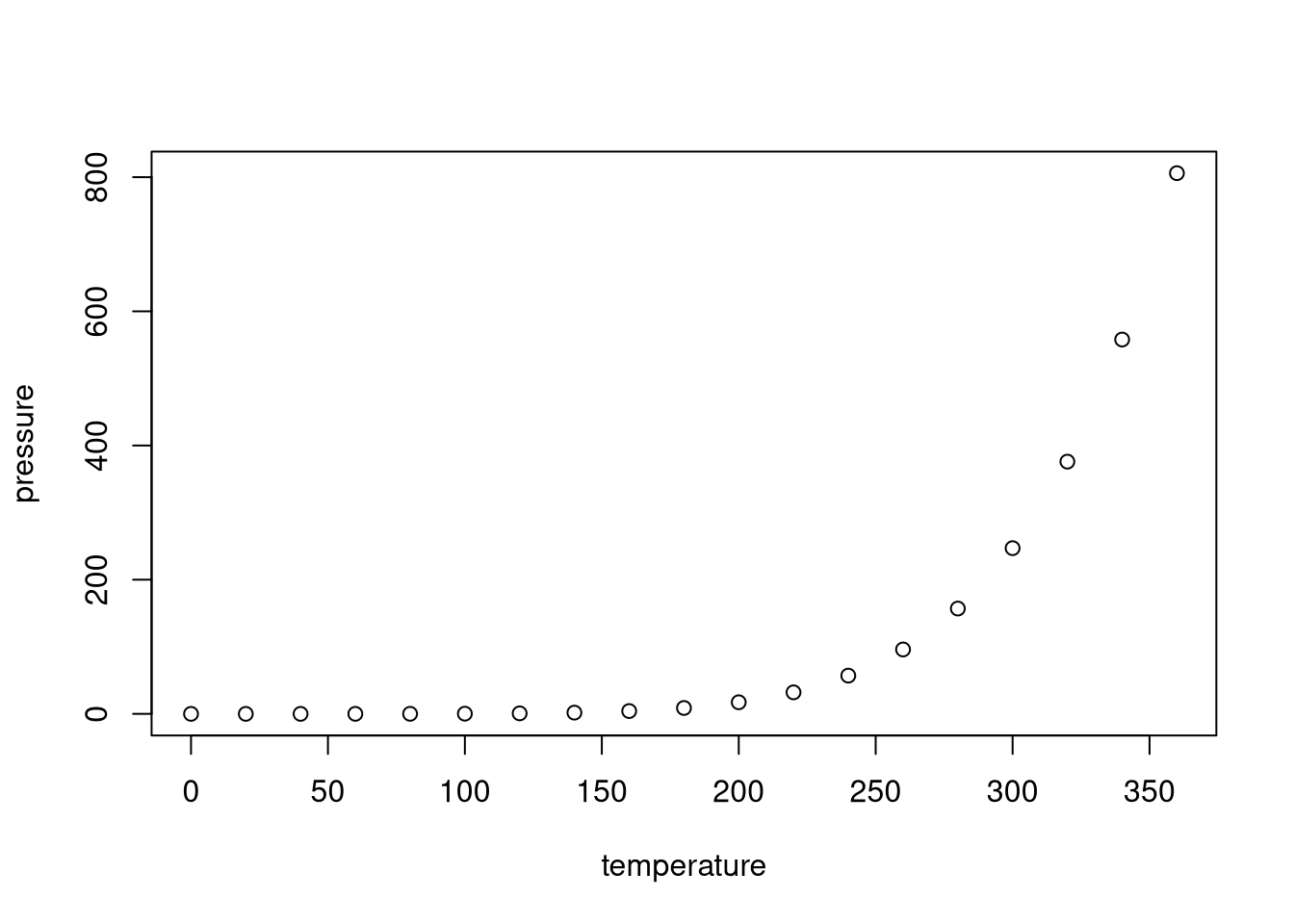References
12.1 R Markdown
This is an R Markdown document. Markdown is a simple formatting syntax for authoring HTML, PDF, and MS Word documents. For more details on using R Markdown see http://rmarkdown.rstudio.com.
When you click the Knit button a document will be generated that includes both content as well as the output of any embedded R code chunks within the document. You can embed an R code chunk like this:
summary(cars)## speed dist
## Min. : 4.0 Min. : 2.00
## 1st Qu.:12.0 1st Qu.: 26.00
## Median :15.0 Median : 36.00
## Mean :15.4 Mean : 42.98
## 3rd Qu.:19.0 3rd Qu.: 56.00
## Max. :25.0 Max. :120.0012.2 Including Plots
You can also embed plots, for example:

Note that the echo = FALSE parameter was added to the code chunk to prevent printing of the R code that generated the plot.
Ackermann, S., & Rasch, B. (2014). Differential effects of non-REM and REM sleep on memory consolidation? Current Neurology and Neuroscience Reports, 14(2). https://doi.org/10.1007/s11910-013-0430-8
Ainsworth, M. D. S., Blehar, M. C., Waters, E., & Wall, S. N. (2015). Patterns of attachment: A psychological study of the strange situation. Psychology Press, Taylor & Francis.
American psychological association (APA). Http://www.apa.org. (2016). http://www.apa.org/support/about-apa.aspx
American Psychological Association, (APA). (2018). Parenting. http://www.apa.org/topics/parenting/index.aspx
Atkinson, R. C., & Shiffrin, R. M. (1968). The psychology of learning and motivation (K. W. Spence & J. T. Spence, Eds.; pp. 89–195). Academic Press.
Baum, W. M. (2017). Understanding behaviorism: Behavior, culture, and evolution (3rd ed.). Wiley-Blackwell.
Baumrind, D. (1966). Effects of authoritative parental control on child behavior. ChildDevelopment, 37(4), 887–907.
Baumrind, D. (1967). Child care practices anteceding three patterns of preschool behavior. Genetic Psychology Monographs, 75(1), 43–88.
Berk, L. E. (2007). Psihologija cjeloživotnog razvoja. Naklada Slap.
Bretherton, I. (1992). The origins of attachment theory: John bowlby and mary ainsworth. Developmental Psychology, 28(5), 759–775.
Chokroverty, S. (2010). Overview of sleep & sleep disorders. The Indian Journal of Medical Research, 131, 126–140.
Collins, H. (2010). Tacit and explicit knowledge (1st ed.). The University of Chicago Press. http://gen.lib.rus.ec/book/index.php?md5=7fe6fb4ac4ce5b3bf740521f3ac6b44a
Curtis, A. (2002). The century of the self. http://topdocumentaryfilms.com/the-century-of-the-self/
Frances, A. (2013). Saving normal: An insider’s revolt against out-of-control psychiatric diagnosis, DSM-5, big pharma, and the medicalization of ordinary life. HarperCollins.
Frances, A. J. (2012, December 2). DSM 5 is guide not bible—ignore its ten worst changes. Psychology today. http://www.psychologytoday.com/blog/dsm5-in-distress/201212/dsm-5-is-guide-not-bible-ignore-its-ten-worst-changes
Fulgosi, A. (1987). Psihologija ličnosti: Teorije i istraživanja (IV). Školska knjiga.
Furlan, I. (1985). Čovjekov psihički razvoj. Školska knjiga.
Gillath, O., Karantzas, G. C., & Fraley, R. C. (2016). Adult attachment a concise introduction to theory and research (1st ed.). Academic Press, Elsevier.
Glassman, W. E., & Hadad, M. (2008). Approaches to psychology (5 edition). Open University Press.
Glumac, S., Kardum, G., & Karanović, N. (2019). Postoperative cognitive decline after cardiac surgery: A narrative review of current knowledge in 2019. Medical Science Monitor, 25, 3262–3270. https://doi.org/10.12659/msm.914435
Goldstein, E. B. (2020). Cognitive psychology: Connecting mind, research, and everyday experience (5th ed.). Cengage Learning Asia Pte Limited.
Graham, G. (2005). Behaviourism. In E. N. Zalta (Ed.), The Stanford encyclopedia of philosophy (Fall 2007 ed.). http://plato.stanford.edu/entries/behaviourism/
Jensen, R. (2006). Behaviorism, latent learning, and cognitive maps: Needed revisions in introductory psychology textbooks. The Behavior Analyst, 29(2), 187–209. https://doi.org/10.1007/bf03392130
Kemp, H. V. (1997). Biography of Diana Blumberg Baumrind. https://www.apadivisions.org/division-35/about/heritage/diana-baumrind-biography
Kenrick, D. T., Griskevicius, V., Neuberg, S. L., & Schaller, M. (2010). Renovating the pyramid of needs. Perspectives on Psychological Science, 5(3), 292–314. https://doi.org/10.1177/1745691610369469
Krstić, K. (1964). Marko Marulić - autor termina psihologija. Acta Instituti Psychologici Universitatis Zagrebiensis, 35-48, 7–13.
Larsen, R. J., & Buss, D. M. (2008). Psihologija ličnosti. Naklada Slap.
Lavery, M., Stull, C., Kinney, M., & Yosipovitch, G. (2016). Nocturnal pruritus: The battle for a peaceful night’s sleep. International Journal of Molecular Sciences, 17(3), 425. https://doi.org/10.3390/ijms17030425
Locke, J. (1690). An essay concerning humane understanding. Thomas Bassett.
MIlas, G. (2005). Istraživačke metode u psihologiji i drugim društvenim znanostima. Naklada Slap.
Miller, G. A. (1956). The magical number seven plus or minus two: Some limits on our capacity for processing information. Psychological Review, 63, 81–97. https://doi.org/10.1037/h0043158
Newberger, C. M. (1980). The cognitive structure of parenthood: Designing a descriptive measure. New Directions for Child and Adolescent Development, 1980(7), 45–67. https://doi.org/10.1002/cd.23219800705
P., K. M. (2018). Psychology of family and marriage: Training manual. КазНУ.
Panjwani, U., Wadhwa, M., Ray, K., & Kishore, K. (2019). Sleep deprivation, cognitive functions, and countermeasures. In V. M. J. Sushil K. Jha (Ed.), Sleep, Memory and Synaptic Plasticity (1st ed.). Springer Singapore. http://gen.lib.rus.ec/book/index.php?md5=87e044e8df8ab4aedc515196e926e309
Pervin, L. A., Cervone, D., & John, O. P. (2008). Psihologija ličnosti: Teorije i istraživanja. Školska knjiga.
Petz, B. (2001). Uvod u psihologiju: Psihologija za nepsihologe. Naklada Slap.
Polanyi, M. (2009). The tacit dimension. University of Chicago press.
Rathus, S. A. (2001). Temelji psihologije. Naklada Slap.
Reber, A. S. (1996). Implicit learning and tacit knowledge: An essay on the cognitive unconscious (oxford psychology series, no 19). Oxford University Press, USA.
Sears, B., & Sears, M. (2001). The attachment parenting book: A commonsense guide to understanding and nurturing your baby. Little, Brown; Company.
Sperry, L. (2016). Luciano l’abate, ph.d.: The acknowledged father of family psychology. The American Journal of Family Therapy, 44(4), 169–171. https://doi.org/10.1080/01926187.2016.1203193
Squire, L. R. (2009). The legacy of patient h.m. For neuroscience. Neuron, 61(1), 6–9. https://doi.org/10.1016/j.neuron.2008.12.023
Steinberg, J. R., Laursen, T. M., Adler, N. E., Gasse, C., Agerbo, E., & Munk-Olsen, T. (2019). The association between first abortion and first-time non-fatal suicide attempt: A longitudinal cohort study of danish population registries. The Lancet Psychiatry, 6(12), 1031–1038. https://doi.org/10.1016/S2215-0366(19)30400-6
Tabery, J. (2014). Beyond versus: The struggle to understand the interaction of nature and nurture. The MIT Press.
Vasta, R. (2001). Dječja psihologija: Moderna znanost (2. izd). Naklada Slap.
Vizek-Vidović, V., Rijavec, M., Vlahović-Štetić, V., & Miljković, D. (2014). Psihologija obrazovanja. IEP, VERN.
Waters, E., Corcoran, D., & Anafarta, M. (2005). Attachment, other relationships, and the theory that all good things go together. Human Development, 48(1), 80–84. https://doi.org/10.1159/000083217
Zhou, C., Geng, H., Wang, P., & Guo, C. (2019). Programmable DNA nanoindicator-based platform for large-scale square root logic biocomputing. Small, 15(49), 1903489. https://doi.org/10.1002/smll.201903489